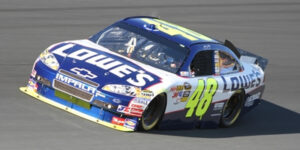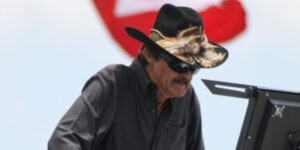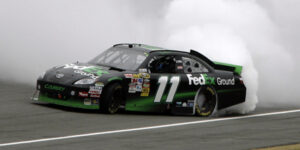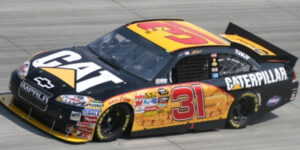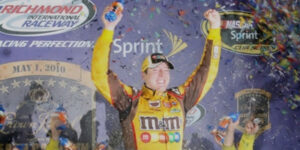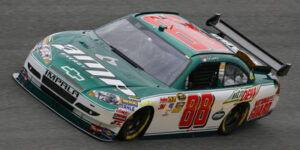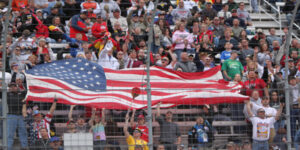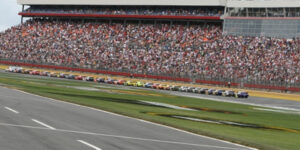Monday morning’s announcement that said “King” Richard Petty has successfully put together an investment team to take control of the NASCAR Sprint Cup team that bears his name left us all stunned. It was only this time last week that we were wondering if Richard Petty Motorsports, (RPM), was going to make it to the race track when the green flag fell on the start of the 2011 season next February.
[media-credit id=26 align=”alignleft” width=”300″]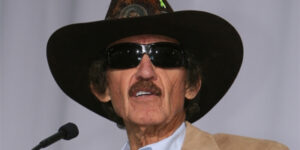 [/media-credit]On Monday RPM officially signed paperwork to close the sale on the racing assets to an investment group led by Richard Petty himself along with the Medallion Financial Corporation and DGB Investments. Richard Petty will become the Chairman of the new ownership group and will oversee RPM’s day to day operations.
[/media-credit]On Monday RPM officially signed paperwork to close the sale on the racing assets to an investment group led by Richard Petty himself along with the Medallion Financial Corporation and DGB Investments. Richard Petty will become the Chairman of the new ownership group and will oversee RPM’s day to day operations.
The team will field two Fords next year. The #43 driven by A J Allmendinger and the #9 driven by Marcos Ambrose. Best Buy Stores, and their Insignia electronics brand, was Allmendinger’s primary sponsor this year. Their current agreement was up for renewal and, as of last week, they have not signed the new contract. The speculation here says they may have been waiting to see where the future of RPM was heading. Monday’s announcement of new team ownership and apparent financial solvency will likely be a great help to that cause. Meanwhile, the Ambrose Ford is set for 2011 with primary sponsorship from Stanley Tools.
From a prepared statement, issued by RPM on Monday, Richard Petty said “today is a great day for me, my family, our fans and our wonderful sponsors. Ford, Stanley, Best Buy, Valvoline, Reynolds, the U.S. Air Force, Super 8, the Paralyzed Victims of America, Wix Filters and Menards have supported me through thick and thin and I thank them from the bottom of my heart.”
Petty was also gracious to the Gillett family, who are now the former majority owners of the team. “George and Foster Gillett deserve a great deal of credit for running a successful race team. They made a significant investment into the business and helped get (the team) back to victory lane. Going forward, we have put together an all star ownership team consisting of myself, Medallion and (DGB) VeriFone, Our partnership with Andy Murstein, (Medallion Corp.), and Doug Bergeron, (DGB Investments), will help take us to a whole new level and I could not be more excited about our future.” Petty said.
As far as the new RPM corporate line up is concerned, Petty will be keeping some very impressive company. Andrew Murstein is the President of the Medallion Financial Corporation. At twenty percent ownership, his family is the company’s largest shareholder. Medallion Financial, a publicly traded investment company, has successfully invested over $3 billion in a variety of companies since 1996.
Equally impressive are some of the names who comprise Medallion’s Board of Directors. It now seems that Richard Petty will be doing business with another hall of famer from the world of sports. Major League Baseball icon “Hammerin’” Hank Aaron is a member of the Medallion Board of Directors. Other Board notables include former New York Governor Mario Cuomo and former Connecticut Governor and Senator Lowell Weicker.
From Monday’s RPM official statement, Murstein said “we could not be happier to be able to acquire these assets together. Richard is one of the greatest names, not only in NASCAR, but in all sports. His name and image are a world recognized brand with unlimited potential to grow and expand in racing. Ample working capital has been invested in the company to insure this great team and legend will not only continue to perform, but will thrive and be back in the winner’s circle.”
DGB Investments is owned by Canadian born business investor Douglas G. Bergeron who is also the CEO of the San Jose-California based VeriFone Systems Inc. In 2001, Bergeron and DGB made financial headlines with the participation in acquiring the assets of VeriFone Systems from Hewlett-Packard for a reported $50 million.
Commenting on his latest investment, in the world of NASCAR racing, Bergeron said “with Richard Petty’s unmatched name and reputation in the motorsports industry, I know this investment is well timed to succeed. We are going to help put RPM back in victory lane.”
As early as November 21st Richard Petty was optimistic that his mission to assume control of RPM’s assets from majority owner George Gillett was on track and his team would be active during the 2011 season. “We’re going to make it,” an enthusiastic Petty said at the time. However there were observers who were highly skeptical about RPM’s future. Many of those critics felt that it simply wasn’t possible for Petty to save his team in time for the start of the new racing season. It’s now obvious that Petty knew something last week that the rest of us didn’t.
For over five decades I have been adamantly telling anyone who will listen that I am Richard Petty’s greatest fan. That driver-fan relationship began back in 1958 when a six year old bashful boy from South Carolina obtained the autograph of a future king for the very first time.
It’s sad to have to admit that I was one of those skeptics who openly wondered if RPM’s days were numbered. I also wondered if Petty, at age 73, really needed the stress of trying to put together an investment team to assume control of this racing operation. The stress from trying to keep RPM’s doors open, due to the growing financial collapse of George Gillett, over the past three months alone was enough to bring a much younger man to his knees.
I am thrilled to tell you that I was wrong. Job well done King Richard.


